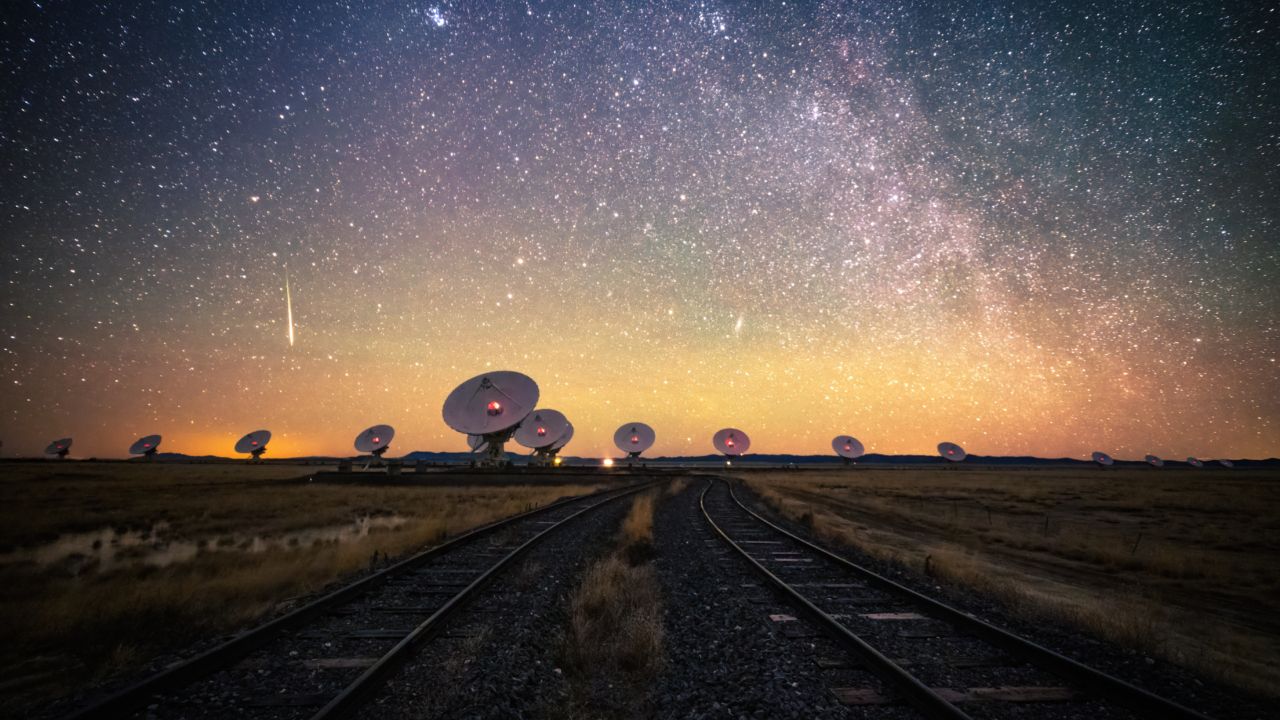SpaceX has collaborated with astronomers to develop an automated data-sharing system aimed at protecting radio telescopes worldwide from interference caused by satellites in low Earth orbit (LEO). This innovative system seeks to mitigate the adverse effects of large satellite constellations, such as SpaceX’s Starlink, which provide high-speed internet but can disrupt sensitive astronomical observations.
Radio telescopes are designed to detect faint radio waves from distant celestial bodies, including black holes and neutron stars. The Square Kilometre Array Observatory (SKAO), being established in Australia and South Africa, has raised concerns that interference from LEO satellites could obscure signals that might indicate the existence of extraterrestrial life, as well as drown out radiation from the furthest galaxies.
A team from the U.S. National Radio Astronomy Observatory (NRAO) has spent three years working on a solution. In partnership with SpaceX, they developed a sophisticated data-sharing system that informs the Starlink network about scheduled telescope observations. This system includes details on the frequencies that astronomers plan to monitor. When Starlink satellites pass over the telescopes, the system instructs them to redirect their beams or mute their electronics to prevent interference.
“The good news is that it’s autonomous on both sides,” said Chris De Pree, deputy spectrum manager at the NRAO, in an interview with Space.com. De Pree’s team has been collaborating with SpaceX since 2022 to implement this solution, which consists of two main components: the Operational Data Sharing (ODS) system, which transmits observing schedules to Starlink, and the Telescope Boresight Avoidance algorithm, which directs satellites to adjust their paths.
The system has undergone successful testing at the NRAO’s Very Large Array (VLA) in New Mexico since August 2024, with plans for further tests at the nearby Very Long Baseline Array and the Green Bank Telescope in West Virginia. The VLA, located near Socorro, features 28 radio antennas, each 82 feet (25 meters) wide, and has significantly advanced our understanding of cosmic phenomena.
Astronomers became acutely aware of the potential impacts of satellite megaconstellations on their work shortly after the launch of the first Starlink satellites in 2019. “For decades, radio astronomers have been building telescopes at remote sites to avoid radio frequency interference,” De Pree noted. “However, with satellite constellations, there are now potentially thousands of sources of interference directly above the telescopes.”
Cosmic radio waves, which travel across millions of light-years, are much weaker than terrestrial radio signals used for broadcasting or telecommunications. Consequently, sensitive radio telescopes require radio-quiet zones, free from broadcasting devices. Unfortunately, satellites are not restricted from passing over these zones, and De Pree mentioned that hundreds of satellites cross over the VLA daily.
With the number of operational satellites increasing dramatically—from around 3,000 in 2019 to over 8,000 currently—astronomers anticipate that the situation will worsen. SpaceX plans to expand its Starlink constellation to over 40,000 satellites within the next decade. Other companies, such as Amazon with Project Kuiper and various Chinese initiatives, are also launching their own satellite fleets. By 2030, the total number of satellites in orbit could reach as high as 100,000, further complicating radio astronomy efforts.
Recognizing the urgency of the situation, the NRAO team approached SpaceX in 2021 to discuss a potential solution. “Radio telescope electronics are very sensitive; they weren’t developed to handle such strong signals from satellites,” De Pree explained. The interference often affects not only the specific frequency bands used by satellites but also a broader spectrum, complicating the work of astronomers.
In the 1950s, the International Telecommunication Union designated specific portions of the radio spectrum exclusively for radio astronomy, restricting broadcasting in those bands. However, the encroachment of satellite operators into these protected regions has become an increasing concern for astronomers. De Pree warned that as these spectrum regions fill with transmissions, the time required to complete astronomical observations will rise.
The newly developed system may be adaptable for other major radio telescopes globally, allowing astronomers to continue their vital work. De Pree expresses hope that not only will other observatories embrace this technology, but that satellite operators will also implement similar measures, enabling both radio astronomy and satellite internet services to function harmoniously.
